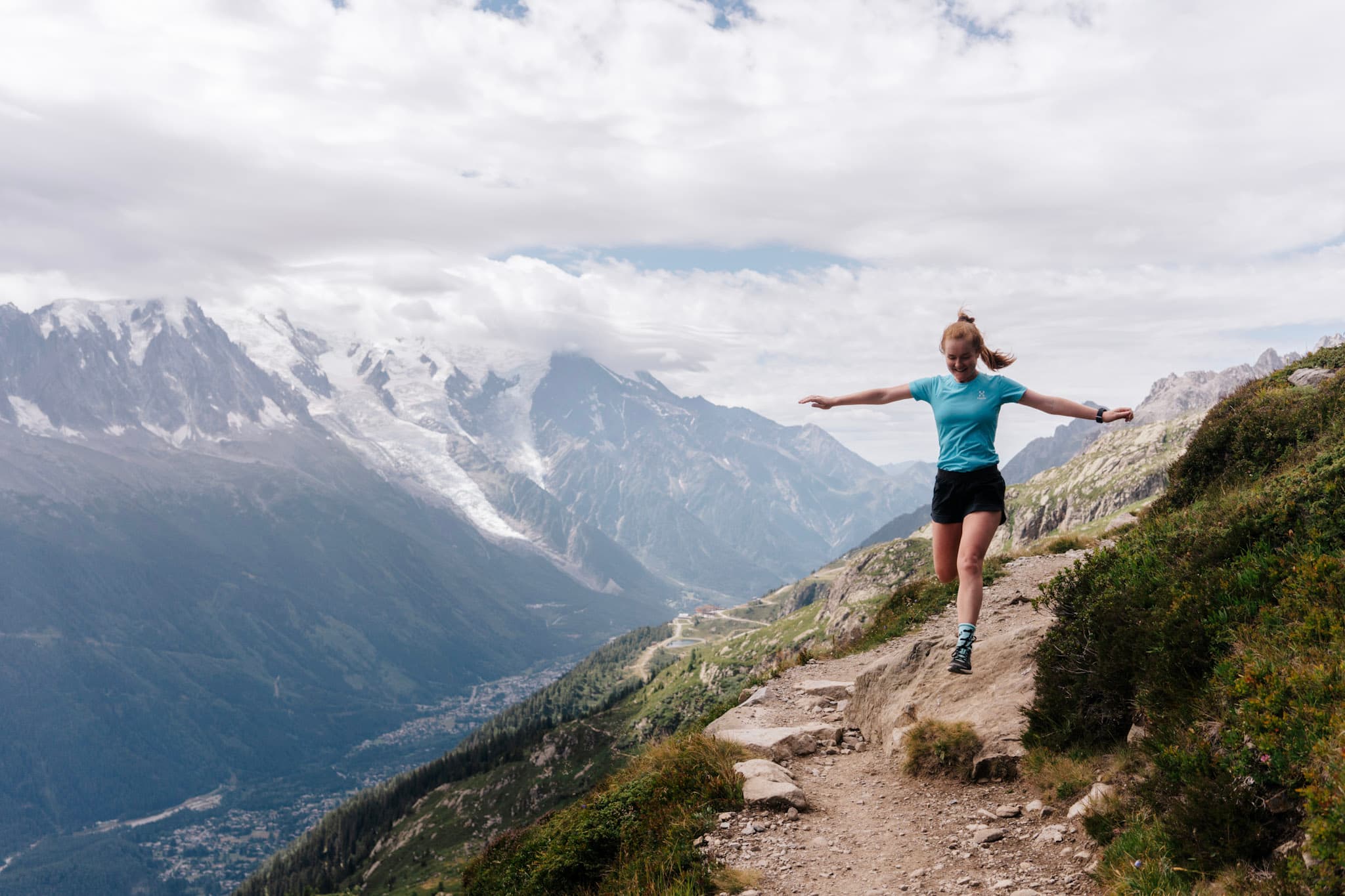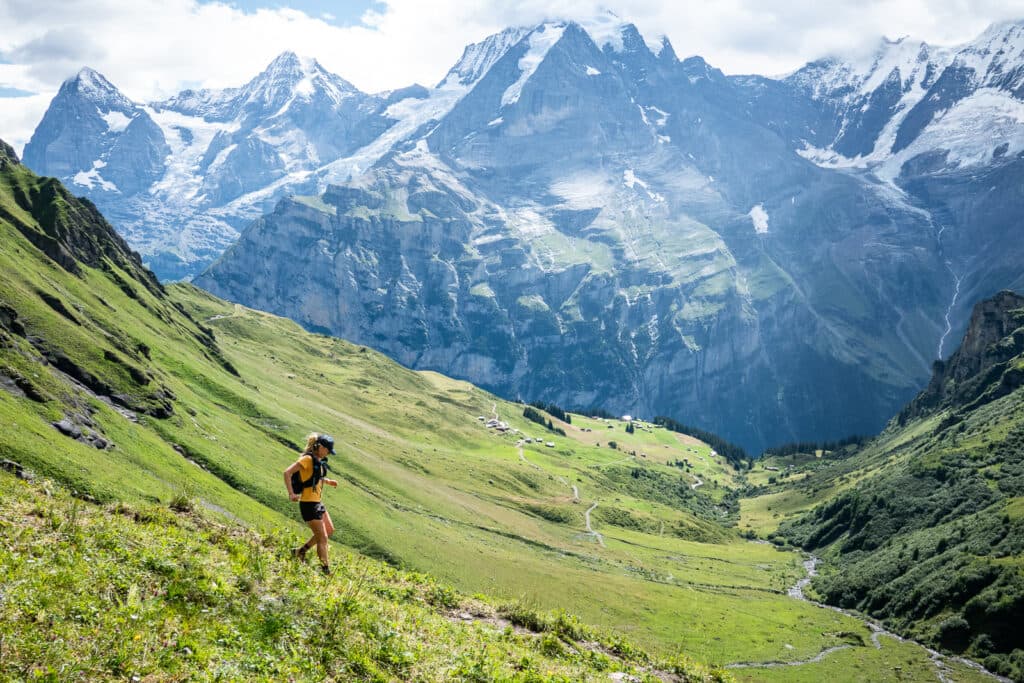

How to Train for Downhill Running
By: Constant Wiederkehr, Vert.run Coach + Marketing Assistant
“What goes up must come down,” as the saying goes, is totally true for trail running–and especially in the Alps. But just because you’ve got the help of gravity on the way down doesn’t mean that you don’t need to train how to run downhill. It’s not at all like riding a bike, where the downhill is a chance to coast. In trail running, and notably in the steep terrain you’ll encounter in the Alps, you’ll need to have strong legs that are ready to handle the pounding of a long downhill…and even more importantly, that are ready to help you hop over roots and rocks without tripping.
Downhill running is a skill often overlooked by many trail runners, but it’s arguably one of the most important skills you should continue to develop and hone, no matter your level or goal. Everybody can benefit from practicing and training how to run downhill–not just elite runners!
While you’re dreaming about exploring the beautiful, alpine landscape with Run the Alps, all of the logistics will be taken care of for you, but there’s one big thing that you can do in advance to help make the most of your trip experience: training!
In this article, Vert.run shares some tips for how to train something many people forget to train: the downhills. So, let’s get to it!

Here are just a few of the things you’ll develop when you train your downhill running skills:
Technical skills:
Downhill running requires a different set of skills compared to running on flat terrain or uphill. It engages the whole body and requires having a good visual overview of the obstacles in front of you, all while keeping good form and having good balance. These technical skills also apply to other types of terrain that you face as a trail runner – so training the downhills is a win-win!
Muscle Conditioning:
Running downhill places unique demands on our muscles, particularly those in the quads, calves, and stabilizing muscles around the ankles and knees. By doing proper downhill training or strength training, you will develop these muscles that are essential to adapting to the stresses of downhill running. And guess what? The same strength routines will serve you VERY well for your uphill skills like power hiking, and also reduce your risk of injury.
Improved Speed:
Downhill running, unless it’s highly technical, typically allows you to move at a faster speed compared to flat or uphill terrain. So, it is an effective and easy way to improve your speed, cadence, and overall efficiency without having to put in too much effort. Remember that both on the flat sections and the downhills having good running efficiency allows you to run faster with less effort.
Enhanced Confidence:
Descending steep trails can be intimidating for some runners, especially those who are new to trail running or have limited experience. Training downhill helps to build confidence and familiarity with descending techniques, enabling you to tackle descents with greater assurance and control. Mental preparedness is a key component of training, to help you arrive confident at the start line of your races, events, and tours.
Reduced Injury Risk:
By incorporating downhill training into your running regimen, you can minimize the risk of injuries by gradually adapting your body to downhill demands and improving your ability to navigate descents safely.
Overall, including downhills in your training is essential for developing the skills, strength, and confidence necessary to be comfortable on all types of terrain.


How can I train for downhill running?
Here are the main things you should work on to develop your downhill running:
- Technique: When running downhill, focus on proper form: lean slightly forward, making short, quick steps.
- Progression: Start with easy descents that aren’t too technical, and gradually increase the steepness and technicality.
- Intervals: The same way you might already have done flat or uphill intervals, you can try some sessions of downhill intervals with recovery periods in between.
- Strength: Build leg strength for the downhills with exercises like squats and lunges.
- Plyometrics: Improve power and agility with jump routines.
- Test different types of terrain: Dedicate sessions to downhill running on varied terrain (rocks, roots, dust, and mud, for example).
- Recovery: Prioritize rest and include stretching and foam rolling.
- Mental Prep: Practice visualization and stay focused during descents.
Don’t forget: downhill training is physically stressful, so listen to your body and don’t over-do it.
We hope that this has been helpful, and that you’re feeling inspired to start rocking the downhills. Happy trails!

About the author: Constant Wiederkehr lives in Annecy, France, just 1 hour from Chamonix! He is a passionate trail runner, Vert.run Coach, and Vert.run Marketing Assistant.
About Vert.run: Vert.run is a training app for trail runners–their mission is to make trail running accessible to everybody, everywhere through smart training plans and affordable coaching.
